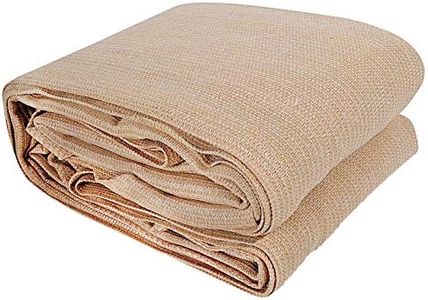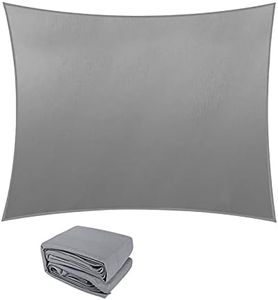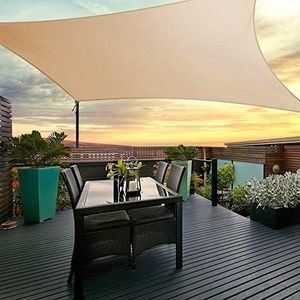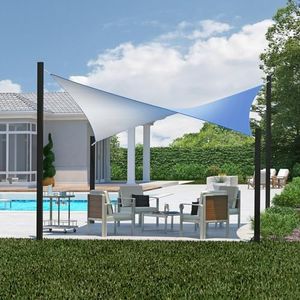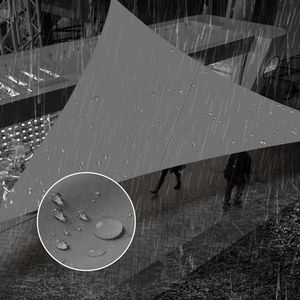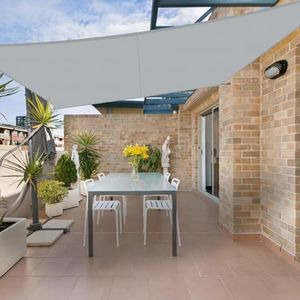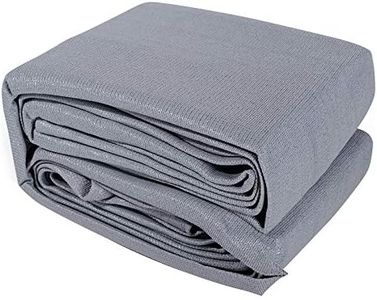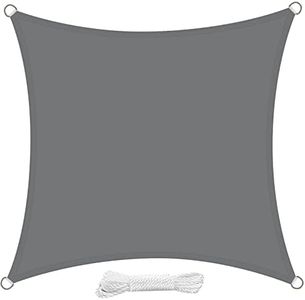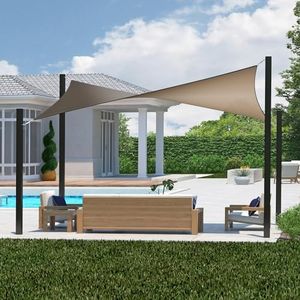We Use CookiesWe use cookies to enhance the security, performance,
functionality and for analytical and promotional activities. By continuing to browse this site you
are agreeing to our privacy policy
10 Best Sun Shade Sail
From leading brands and best sellers available on the web.Buying Guide for the Best Sun Shade Sail
Choosing the right sun shade sail can make a big difference in your outdoor comfort and the protection of your space from the sun's rays. The perfect sail will depend on factors like the area you want to shade, the weather conditions in your location, and your aesthetic preferences. It’s important to understand key features so you select a shade sail that meets your needs, stays durable, and is easy for you to install and maintain.MaterialMaterial refers to the fabric used for the sun shade sail, and it’s crucial because it determines durability, UV protection, water resistance, and breathability. The most common materials are high-density polyethylene (HDPE) and polyester. HDPE is known for allowing air and light to pass through, keeping things cool while blocking harmful rays, making it great for hot, dry areas. Polyester can be coated to be fully waterproof, perfect if you want rain protection as well. When picking, consider your climate—choose HDPE for better airflow in hot places and waterproof polyester if you want to stay dry during rain.
UV ProtectionUV protection indicates how well the sail blocks out the sun’s harmful ultraviolet rays. Higher percentages mean better shielding for your skin and furnishings. Shade sails usually range from about 80% to over 95% UV blockage. If you’re planning to use the area often during peak sun hours, go for the upper range. For occasional or partial shade, a lower percentage might be sufficient.
Size and ShapeSize and shape determine how much area the sail covers and how well it fits your outdoor space. Common shapes include triangles, rectangles, and squares. Large, rectangular or square sails cover bigger areas, great for patios or driveways, while triangles are easier to install in corners or smaller spaces. Measure your area first and think about where you’ll anchor each corner—the goal is to have a taut and secure installation with the correct coverage for your needs.
Installation and HardwareThis refers to how the sail is set up and secured in place. Some sails come with all necessary hardware (like hooks, ropes, and tensioners), while others don’t. Look for reinforced edges and strong attachment points, as these help the sail handle strong winds. Consider if you’re able to use existing structures (like walls or poles), or if you’ll need to add new mounting points. If you prefer a quick, easy setup, make sure the hardware is included and understandable.
Water PermeabilityWater permeability describes whether water will go through the fabric or run off of it. Some sails are ‘waterproof’ and will shield you from rain, while others are ‘water-permeable’ and designed mainly for sun—all the while letting rainwater pass through so it doesn’t pool in the middle. Choosing depends on your primary use: if you want rain protection, opt for waterproof; for better airflow and to avoid water pooling, a permeable sail is best.
ColorThe color of the sail affects not only the look of your space but also heat absorption and the feel underneath. Lighter colors reflect more sunlight, keeping things cooler, while darker colors may absorb heat but can offer slightly higher UV protection. Choose a color that matches your style and also think about how much heat you want to avoid under the sail.
